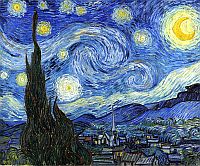
|
|
Star LoreNameExoWorldsTwo Projects initiated by the IAU
| |


|
|
In 2015, the International Astronomical Union (IAU) organised the first
NameExoWorlds contest. It provided the first opportunity for the public to submit
names for exoplanets and their stars.
 At the end of the contest, the names of 14 stars and 31 exoplanets orbiting these and five other, already named stars were chosen by public vote and accepted by the IAU. (click here for the complete list). Encouraged by the 2015 event and celebrating its 100th anniversary, in 2019, the IAU launched a much larger project called IAU 100 NameExoWorlds, offering every country on Earth the chance to name one planetary system, comprising an exoplanet and its host star. Every participating country voted on the proposals of that nation. As a result, out of thousands of proposals, the names for 113 stars and 113 exoplanets were adopted by the IAU (click here for the complete list). Here are the (still incomplete) results of both events, sorted alphabetically by constellation. |


|
|
NameExoWorlds, 2015 |

|
|
Andromeda |

 |
The Royal Astronomical Society of Canada Thunder Bay Centre, Canada suggested the name Veritate, Latin for
where there is truth for the star 14 Andromedae.
 14 Andromedae b, a planet orbiting the star was named Spe, Latin for where there is hope. |

 |
The star υ Andromedae A (one of the components of double star υ And) was named Titawin by
the Vega Astronomy Club of Morocco. Titawin, the historical part of the Moroccan town of
Tétouan, which is a UNESCO World Heritage site.
 Three planets orbiting υ Andromedae, υ And b, υ And b, υ And c and υ And d were named Saffar, Samh and Majriti after 11th century Andalusian Arab astronomers. |
 Titawin, © Anassbarnichou2
Titawin, © Anassbarnichou2
|


|
|
Aquila
The Libertyer Student Club at the Hosei University in Tokyo, Japan
suggested the name Libertas, Latin for
liberty for the star ξ Aquilae. In the club's suggestion, The constellation Aquila represents an eagle -
a popular symbol of liberty. Libertas refers to social and political freedoms, and a reminder that there are people derived of liberty in the world even today.
|


|
|
IAU 100 NameExoWorlds, 2019 |

|
|
Andromeda |

 |
Ethiopia is considered the birthplace of coffee. Star HD 16175 was named Buna, which
is the traditional Ethiopian word for Coffee.
 Planet HD 16175 b was named Abol after the first of three rounds of coffee in the Ethiopian traditional coffee ceremony. |
 Buna ceremony;
tiplr.com
Buna ceremony;
tiplr.com |

 |
The Netherlands were the only country choosing paintings:
 Star HAT-P-6 was named Sterrennacht, Dutch for Starry Night, after a famous painting by Dutch painter Vincent van Gogh.  Planet HAT-P-6b was named Nachtwacht, Dutch for Night Watch, after a painting by Dutch painter Rembrandt. |
 Starry Night
Starry NightSource: Wikipedia |
 The Night Watch
The Night WatchSource: Wikipedia |


|
|
Aquarius |

 |
Bosnia and Herzegovina suggested the name Bosona for the star
HD 206610. Bosnia was first mentioned in the mid-10th century in a
politico-geographical handbook written by Byzantine emperor Constantine VII. In it, he describes the "small land of Bosona." The name also relates to the
Bosna River.
 Exoplanet HD 206610 b was named Naron, an antique name for the river Neretva. |
 Bosna River;
Wikipedia
Bosna River;
Wikipedia |

 |
Aquarius was always related to floods and droughts. Going along with that theme, the
Dominican Republic named the star
WASP-6 Márohu.
 Planet WASP-6b was named Boinayel.  Márohu and Boinayel were deities of the indigenous Taíno people of the Caribbean.  Márohu was the the god of drought is the protector of the Sun.  Boinayel was the god of rain that fertilizes the soil.  Sources: IAU100 Name ExoWorlds: Approved Names |
 Wood carving of Boinayel
Wood carving of BoinayelSource: The British Museum |

 |
Hong Kong's contribution was the name Lionrock for the star
HD 212771.
 Lion Rock is a mountain top resembling a crouching lion.  Exoplanet HD 212771 b was named Victoriapeak after Victoria Peak, the highest hill on Hong Kong island.  Both mountains are of high cultural significance for the people of Hong Kong. |
 Lion Rock;
Wikipedia
Lion Rock;
Wikipedia |


|
|
Aquila |

 |
Jordan choose two UNESCO World Heritage Sites
for its contributions.
 Star WASP-80 was named Petra after the famous historic and archaeological city Petra in the south of the country.  Planet WASP-80b was named Wadirum. Wadi Rum, the Valley of the Moon is the largest sandstone valley in Jordan and has been inhabited by many human cultures since prehistoric times. |
 Great Temple in Petra
Great Temple in PetraSource: National Geographic |
 Petroglyphs in Wadi Rum
Petroglyphs in Wadi RumSource: Wikipedia |



|

Lebanon named star HD 192263
Phoenicia after the ancient Mediterranean seafaring civilization.
|
 Phoenician ship in Beirut
Phoenician ship in BeirutSource: khanacademy.org |


 |
Tunisia selected two pieces of traditional culture.
 Chéchia, a flat-surfaced, red wool hat is the traditional Tunisian headdress for men and women. The name was chosen as the name for star HD 192699  Planet HD 192699 b was named Khomsa. Khomsa, also called Khamsa or Hamsa is a popular palm-shaped amulet, used in jewelry and decorations. It depicts an open right hand and is often found in modern designs. |
 Chéchia;
Wikipedia
Chéchia;
Wikipedia |
 Khomsa;
etsy.com/
Khomsa;
etsy.com/ |


|
|
Cassiopeia |

 |
The star HD 17156 was named Nushagak as proposed by the
USA. The
Nushagak River is a river in southwest Alaska, famous for its wild salmon that sustain
local Indigenous communities.
 Planet HD 17156 b was named Mulchatna after the Mulchatna River, a tributary of the Nushagak River.  Source: IAU100 Name ExoWorlds: Approved Names |
 Salmon on the Nushagak River
Salmon on the Nushagak RiverSource: oregonlive.com
|


|
Back to Star Lore |
Back to Mythology |
Back to Space Page |
Back to English |
 Back to Start Page |